Common Types of Squat Bars: Which One to Pick?
Author:
Unlock your full potential by engaging with our experts and community! Have questions about your fitness journey or looking for expert advice on weightlifting techniques? Don’t hesitate — leave a comment below and Ihor Shymechko will provide a personalized answer and insights to help you reach your goals.
Torokhtiy is reader-supported. Some links are affiliate links, and we may earn a commission at no extra cost to you. See our disclosure page for details.
Fitness industry experts agree that squatting is one of the most effective lower-body exercises.
In recent years, different squat bars have been rising in popularity for making this exercise easier, safer, and more accessible.
Today we’re going to compare the types of squat bars to see which one is the best and why.
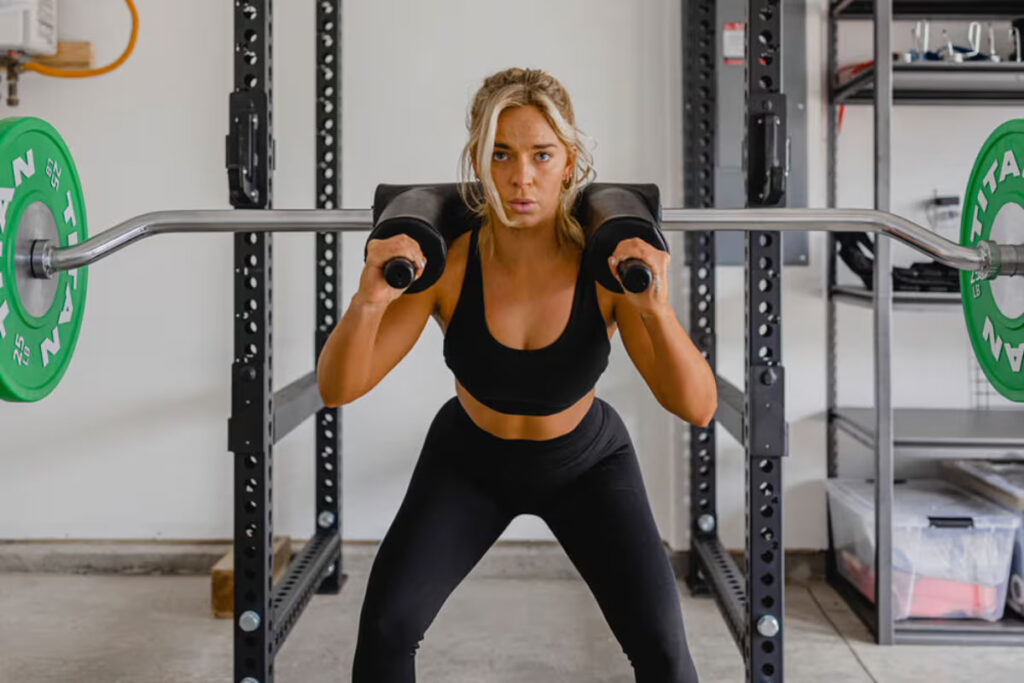
Main Types of Squat Bars
Barbells exist in various shapes, sizes, and purposes.
Here are the 5 most popular squat bar types:
- Traditional Squat Bar
- Power Bar
- Safety Squat Bar
- Cambered Squat Bar
- Olympic Weightlifting Bar
1. Traditional Squat Bar
The traditional barbell or bar is a tried and tested exercise tool that has seen very little change over the generations it’s been in the fitness industry. The main reason why it will never go out of use, despite all the different types of squat bars that exist nowadays, is the unmatched versatility it provides. Apart from squats, they can be used for pretty much any popular workout that requires a barbell, such as deadlifts, bench presses, push presses, and similar.
It is used by all athlete levels, whether you’re a beginner fitness enthusiast or a professional, and is seen in all branches of fitness, including bodybuilding, powerlifting, fitness, etc. The traditional barbell is equally good at front or back squats and can be used for pretty much all of their variations.
Due to its many uses, it’s one of the first items we recommend getting when you start a garage or home gym. A traditional bar can be found in many price ranges, from budget-friendly to premium products, and the versatility makes it very cost-effective.
The only slight drawback – if we can call it like that – is that it’s a jack of all trades, yet master of none. This means that, while it will get the job done for most of your barbell needs, some specialty squat weight bar types we’ll mention throughout the article will be better for your squat exercises specifically. A traditional barbell doesn’t have any ergonomic features such as curling or padding to make it more comfortable.
Our Favorite Traditional Squat Bar — REP Alpine Weightlifting Bar
This Alpine Bar is a true gem. It’s designed for weightlifters who are after top-tier performance, and it meets the specifications of the International Weightlifting Federation. The thing that stands out the most is its hybrid needle-bearing sleeve construction.
Rep incorporated standard needle bearings with special inner-race ones and the result is an exceptionally smooth, consistent rotation. You can count on this barbell to perform flawlessly during your lifts. Knurling is another fantastic aspect – it’s medium-depth and volcano-style, so it’s a balance between solid grip and comfort, since it’s not too aggressive to your hands. It’s available in several finishes – hard chrome, stainless steel, and black chrome.
You’ll also notice some premium touches, like the laser etchings of the barbell’s name and weight on the inside of the sleeves and the metal endcaps with unique designs. It’s very clear how much attention to detail went into designing this barbell and those details make it stand out from the crowd. There’s not much to complain about with this – it’s almost impeccable.
The only thing that may be considered a flaw is the somewhat loud noise the grooved sleeves produce during lifts. It won’t affect your performance, but if we’re nitpicking, this could be the one drawback this barbell has. Overall, though, the REP Alpine Weightlifting Bar is absolutely fantastic.
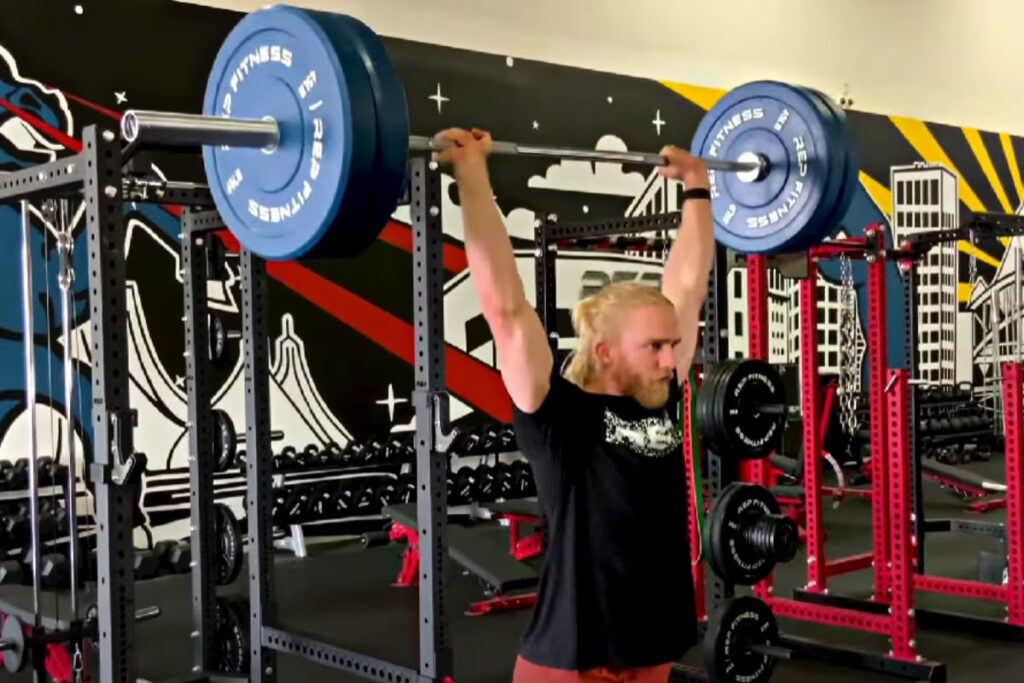
2. Power Bar
The Power Bar is very similar in shape and size to a traditional and Olympic barbell, being only slightly larger and packing a few extra features. Power barbells tend to be the most common bar found in commercial gyms, so it’s no surprise many people confuse them with Olympic ones. The build and material quality is top of the line, and it is made to withstand heavy loads and force, just as you’d expect based on the name.
When compared to a traditional bar, you’ll notice that it’s slightly longer at around 85 inches on average, slightly thicker with roughly 1.2 inches in shaft diameter, and with higher tensile strength, commonly over 200,000 PSI. Olympic bars are known for their shaft knurling on the sides for better grip. Power bars feature both side knurling and an additional middle knurl pattern for better sticking during exercises where the center is in direct contact with the athlete, such as squats. Power bars are, on average, more expensive than traditional ones, however, they compensate for this with extra durability.
Our Favorite Power Bar — Rogue 45lb Ohio Power Bar
Rogue Fitness is a U.S.-based company of workout equipment. The brand is popular both in the home gym sphere, and also commonly found in professional settings. For example, Rogue is licensed by the International Weightlifting Federation and their barbells are used in all levels of competition, including world championships. The Rogue 45lb Ohio Power Bar got its name because it’s entirely made and assembled in Columbus, Ohio. Like all power bars, it features the side and center knurling with deep and coarse powerlifting knurl marks.
As the name suggests, it weighs 45 pounds, a tensile strength of 205,000 PSI, and it was tested for roughly 650 pounds of maximum capacity – all of this is complemented by a Lifetime Warranty against bending. The version we’re talking about has a sleek black zinc finish over the shaft and bright zinc sleeves, but there are other options such as bare steel or stainless steel, or combinations of both (with varying prices).
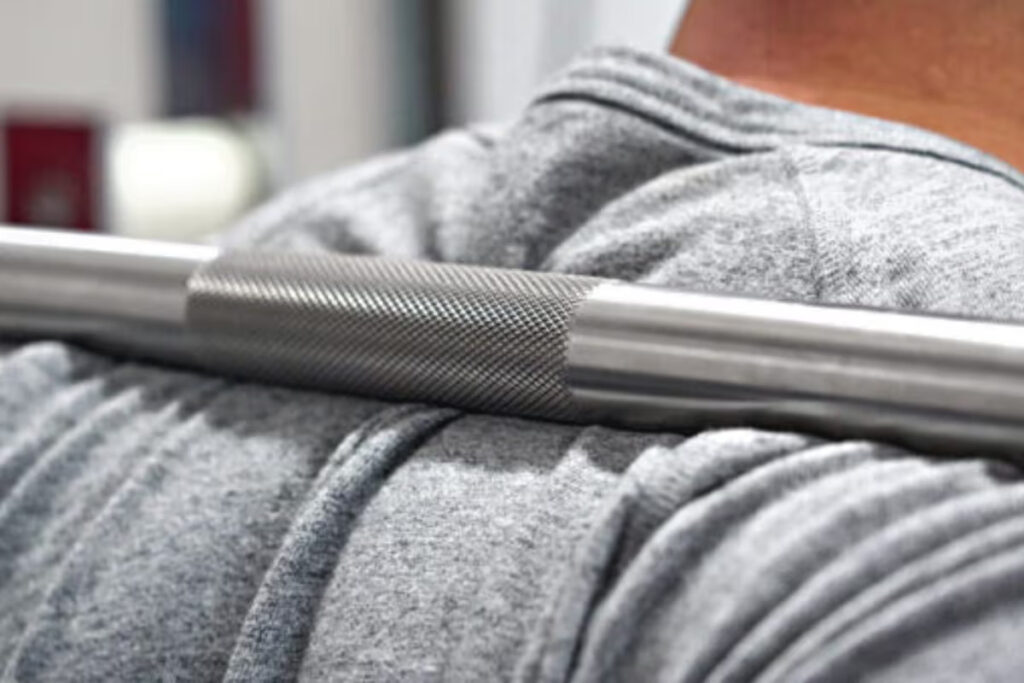
3. Safety Squat Bar
When it comes to noise, rear drive ellipticals tend to be quieter machines. This is often due to the less overall parts and mechanisms needed to make a rear drive elliptical run smoothly. The lower overall number of parts has a second advantage to just reduce noise when in Now let’s talk about the barbell specially designed for squatting. The Safety Squat Bar, also known as an SSB, SSB bar, or simply safety bar, is a barbell made to improve your squats in everything from comfort, to exercise precision, ease of execution, and more. Specialized barbells have been on the rise in recent years, replacing traditional bars when it comes to specific exercises.
The immediate benefit of using a Safety Squat Bar over an Olympic bar is the ergonomic features. Unlike traditional bars, an SSB features comfortable padding along the neck and shoulder line, making the exercise more comfortable and preventing injuries. The forward-extending handles are there for better balancing both during your squatting sessions, and crucially when you mount and dismount the bar. According to studies, athletes using the safety squat bar experienced up to 50% less strain in areas commonly injured by squatting, particularly the lower back. In terms of design, apart from the comfort padding and handles, they commonly feature a camber drop for improved balance.
Other than that, the features are up to the manufacturer, so depending on the brand and your budget you will find SSB bars with or without knurling, with fixed or rotating sleeves, made from various steel alloys, and with different finishes.use. Rear drive ellipticals tend to have higher overall durability than many front drive models because of the lower number of parts used. As a result, they require fewer repairs and needs for replacement on average.
Our Favorite Safety Squat Bar — Rogue Fitness SB-1 Safety Squat Bar
Another top choice made by the brand Rogue Fitness. This fully-welded solid steel bar is tested on up to 1000 pounds of weight capacity. In terms of ergonomics, it features heavy-duty vinyl and closed-cell foam pads, rotating Olympic sleeves, and a camber drop of 5.5 inches.
The all-black cerakote finish looks and feels premium, and the padding proudly displays “Made in the U.S.A.” printed across. At 70 pounds of weight and 93 inches in length, it may appear huge at first, however, it’s undeniably comfortable to use. That said, smaller athletes may find it slightly overwhelming. With all the performance and comfort benefits it has over the standard barbells, the Rogue Fitness SB-1 will benefit your short and long-term results.
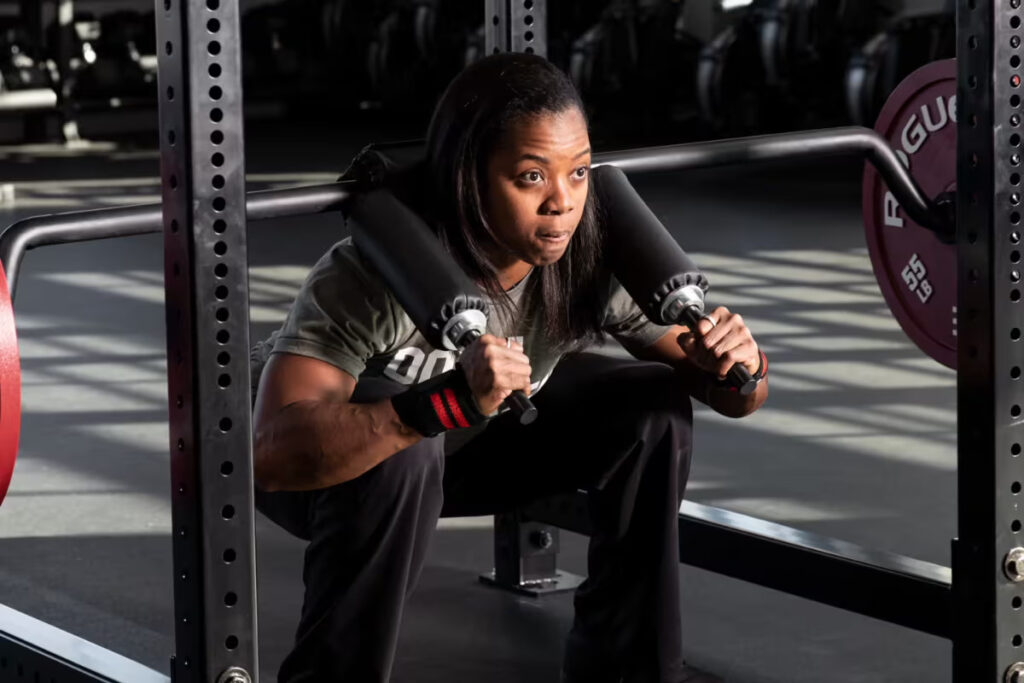
4. Cambered Squat Bar
The Cambered Squat Bar or simply camber bar features a noticeable camber drop for weight placement, usually around 14 inches. The bar is designed to provide less stress on the upper body, however, it is not suited for beginners, as the camber drop makes it harder to balance because of potential swinging during exercise motion.
This squat weight bar version is for more advanced squat exercises and is better suited for pros such as powerlifters, bodybuilders, and strongman competitors, for example. If you consider yourself an advanced athlete and regularly squat with the previously mentioned barbells, the cambered squat bar types might be the ideal challenge for you.
The shape of the bar allows you to choose where and how you grip it, which can significantly lower tension in your wrists compared to standard barbell squats. The weight position lowers your center of gravity, which can reduce pressure on your shoulders and back, areas where squat injuries are most common.
Our Favorite Cambered Squat Bar — CB-1 ROGUE CAMBER BAR
Just like the SB-1 SSB, the CB-1 specialty bar is made from solid steel with a 1.5-inch diameter. The bar itself weighs 85 pounds and has a maximum tested weight capacity of 1000 pounds, and features rotating sleeves. The 88-inch-long shaft is rackable and can be placed on your squat stand, power rack, or other rings.
It is shaped slightly farther in front of the midline to place more emphasis on your lower back and hamstrings. For a product of this caliber, the price is also fair compared to competitors.
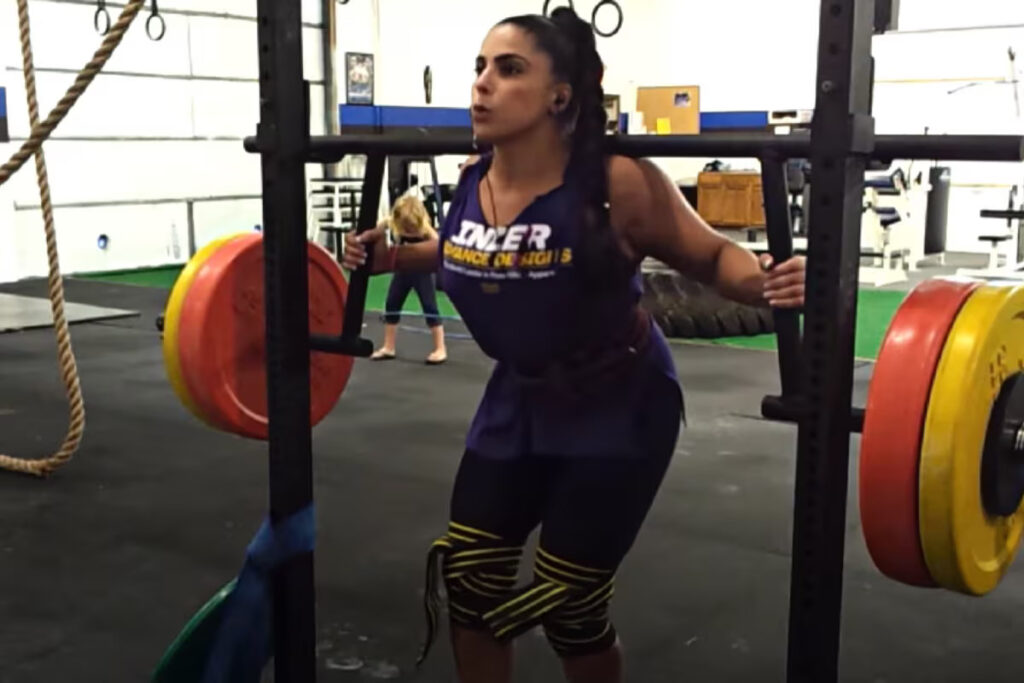
5. Olympic Weightlifting Bar
If you’re unfamiliar with the term weightlifting bar, you might know it better as the Olympic barbell. So, what’s the difference between a weightlifting barbell and a traditional barbell made with Olympic standards? All manufacturers can choose to make a barbell in accordance with International Weightlifting Federation standards.
However, not all of those barbells can and will get certified. Barbells that do get the IWF certification get to call themselves Olympic weightlifting bars. The weightlifting barbell is used for use in the two competitive and Olympic lifts, the “Snatch” and the “Clean and Jerk”.
Our Favorite Weightlifting Bar — Rogue Pyrros Bar
Another easy win for Rogue Fitness. This barbell is the result of the collaboration between the Rogue Fitness design team and Pyrros Dimas – a 3-time Olympic Gold medalist and current president of USA Weightlifting (USAW). Rogue asked for feedback on the ideal weightlifting bar from Pyrros and worked with him to choose the best material, the perfect knurling, and the ideal amount of spin. When they showed him the results, the most decorated weightlifter of all time simply said, “it’s perfect”.
The barbell itself features standardized Olympic Bearing Bar measurements and has been certified by the IWF since 2019. The 28 mm (1.1 inches) diameter shaft is made of stainless steel and features aggressive Olympic and center knurling, and proudly displays the IWF certification branding (found on the end caps as well). In terms of raw specs, it features a standard 44-pound weight, a tensile strength of 200,000 PSI, and rotating sleeves.
The sleeves come in optional chrome or stainless steel finishes and feature five German standard needle bearings in each sleeve and a more viscous lubricant to give it the perfect spin Pyrros wanted. Finally, the bar features a Lifetime Warranty, which reaffirms Rogue’s commitment to quality.
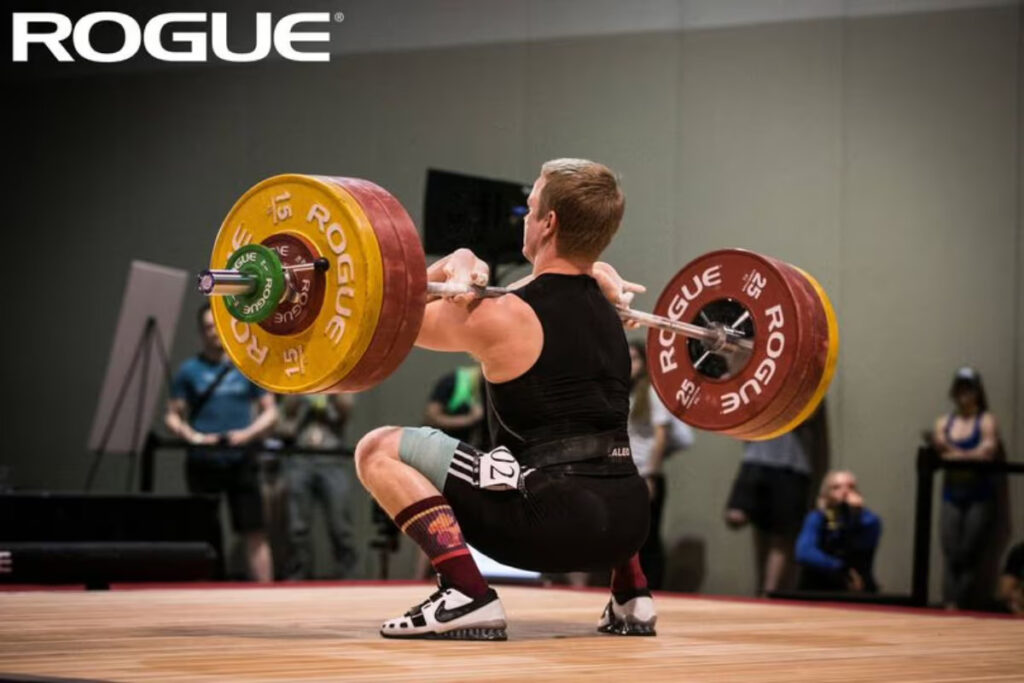
Are Squat Bars Really Better and Safer for Squats?
The short answer is “Yes”. The slightly longer answer is, the ergonomic features that different types of squat bars have fixed common exercisissues athletes run into when squatting. Safety squat bars, for example, have improved comfort, balance, and weight distribution with their ergonomic padding, camber drop, and handles.
All of these features alleviate tension from areas commonly injured during squats, including your shoulders, back, and wrists. They also make the exercise mounting and dismounting (a common point of injury) easier, making it more accessible to people with lower body mobility. That said, you still need to learn proper squatting techniques, as improper exercise form is one of the leading causes of injuries.
Unless you plan on doing competitive lifting and need to stick to Olympic barbells for precise training, different squat bars are better and safer.
FAQ
What is a Squat With a Bar Called?
The most common name is simply the Barbell Squat. Depending on the type of squat, it might be called a Front Barbell Squat, a Back Barbell Squat, and so on.
Which Bar is Best for Squatting?
Overall, the best bar specifically for squatting would be the Safety Squat Bar.
For people with competitive lifting aspirations, sticking to an Olympic barbell might be best, due to muscle memory and equipment familiarity.
Powerlifters that are looking for a new challenge can try the cambered bar, too.
Is a Stiff Bar Better for Squats?
Most bars used for squatting are classified as stiff bars, meaning they have high tensile strength and don’t flex or bend when lifted while loaded. This characteristic is important for weightlifting exercises such as squats, as too much barbell bending can cause balance issues.
Conclusion
Squatting is one of the most popular weightlifting exercises, both among beginners and expert athletes. While they’re most commonly done using traditional Olympic-sized barbells, in recent years specialized bars such as the Safety Squat Bar have taken them to the next level. These bars significantly improved squatting comfort and safety, which was the main concern and reason to avoid this highly beneficial exercise for many athletes.
Do you squat regularly as part of your workout routine? Which bar do you prefer, traditional or specialized? Leave your thoughts in the comments, and make sure to follow me on social media for more fitness content and product reviews.
Also Read:
- Cost of Barbell
- Different Types of Barbells
- Olympic vs Standard Barbell
- Safety Squat Bar Guide
- Bumper Plates Buying Guide
- Weight Bench Guide
- Safety Squat Bar Guide
References:
- Effects of the Safety Squat Bar on Trunk and Lower-Body Mechanics During a Back Squat // LWW Journals: https://journals.lww.com/nsca-jscr/Abstract/2019/07001/Effects_of_the_Safety_Squat_Bar_on_Trunk_and.5.aspx
- Poor technique – Causes of Sports Injuries // Sports Medicine:
https://www.nsmi.org.uk/articles/causes-sports-injuries/poor-technique.html - Deadlift Bar vs. Stiff Bar: Let’s Weigh the Difference // Active:
https://www.active.com/fitness/articles/deadlift-bar-vs-stiff-bar - High Bar vs. Low Bar Squat: What’s More Effective? // Healthline:
https://www.healthline.com/health/fitness-exercise/high-bar-vs-low-bar-squat - 7 Different Types of Squats // Verywellfit:
https://www.verywellfit.com/different-types-of-squats-in-the-gym-3498231
Why Trust Us?
With over 20 years in Olympic weightlifting, strength training, nutrition coaching, and general fitness our team does its best to provide the audience with ultimate support and meet the needs and requirements of advanced athletes and professional lifters, as well as people who strive to open new opportunities and develop their physical capabilities with us.
By trusting the recommendations of our certified experts in coaching, nutrition, and sports training programming, as well as scientific consultants, and physiotherapists, we provide you with thorough, well-considered, and scientifically proven content. All the information given in the articles concerning workout programming, separate exercises, and athletic performance, in general, is based on verified data.
The product testing process is described in more detail here.
Author: Ihor Shymechko
Pro Olympic Weightlifter, Coach
Best Results: Snatch – 208 kg,
C&J – 240 kg
Ihor has been a professional weightlifter since 1996, boasting over two decades of competition experience. His notable achievements include clinching the European Championship in 2009 and securing a silver medal in the 105kg division at the Senior World Championships in 2011. Ihor represented his country in the 2008, 2012, and 2016 Summer Olympics. After retiring from competitive weightlifting, he transitioned to coaching, leveraging his vast experience to guide athletes who now compete on both national and international stages.



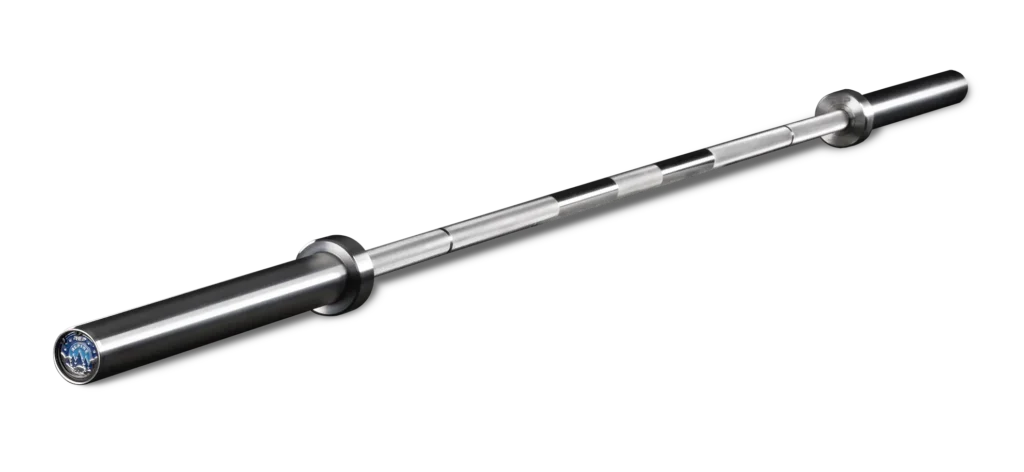
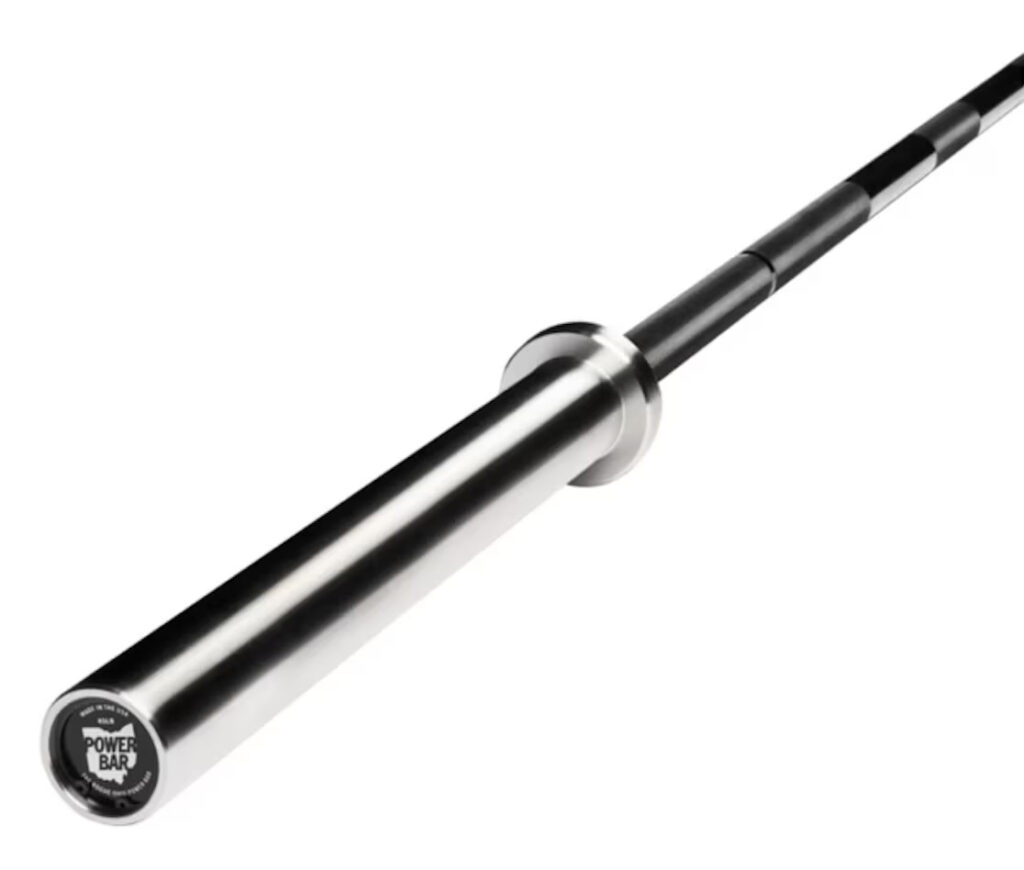
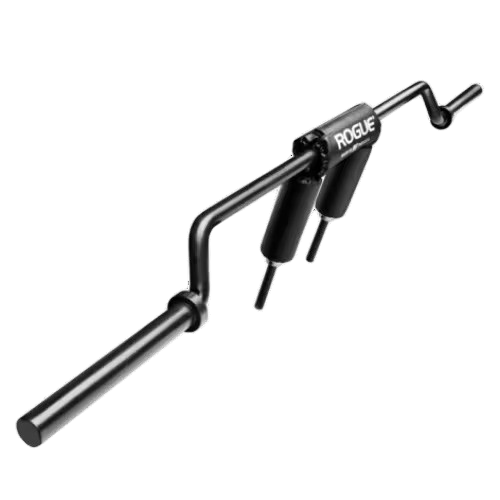
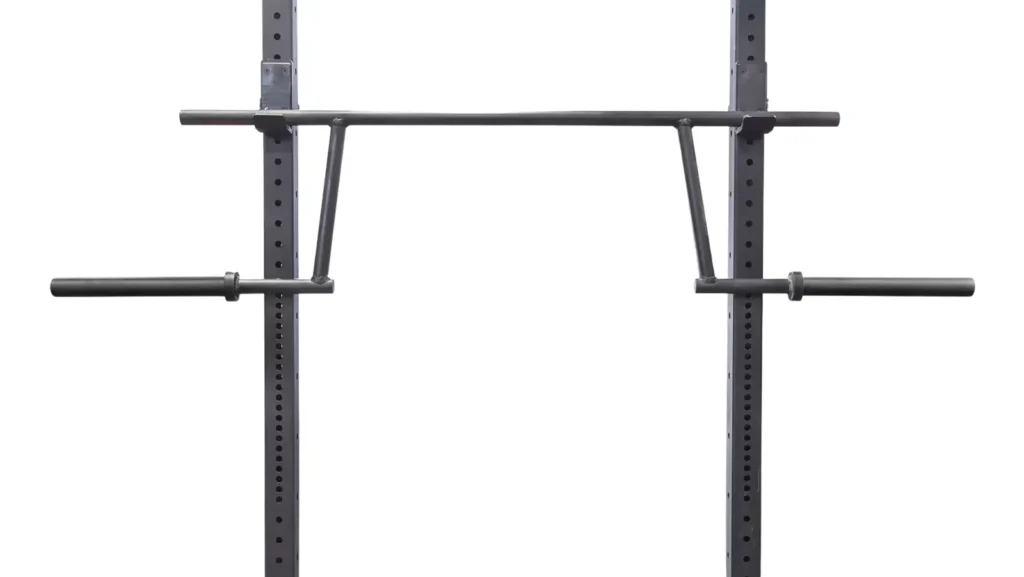
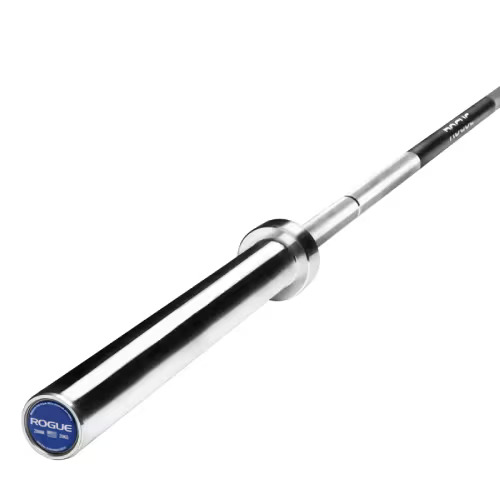
Still have questions after reading our article? Unlock your full potential by engaging with our experts and community! Don’t hesitate — leave a comment below and Ihor Shymechko will provide a personalized answer and insights to help you reach your goals.